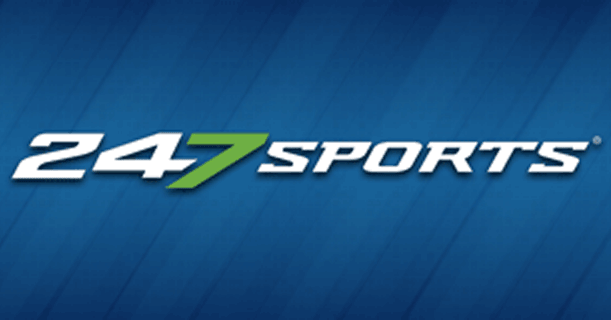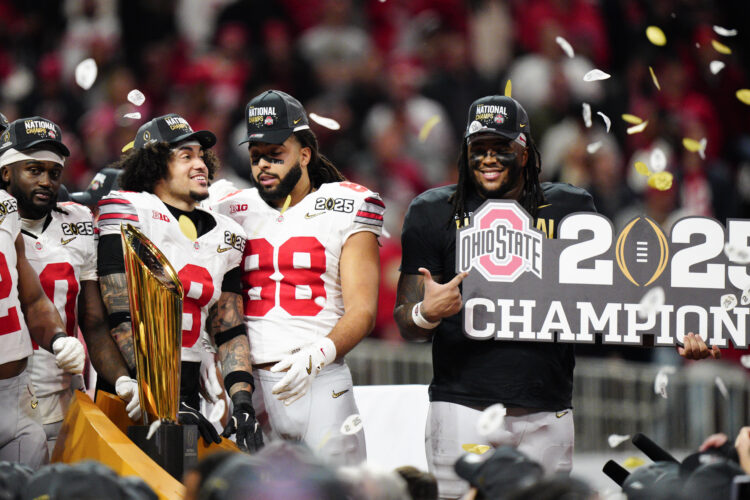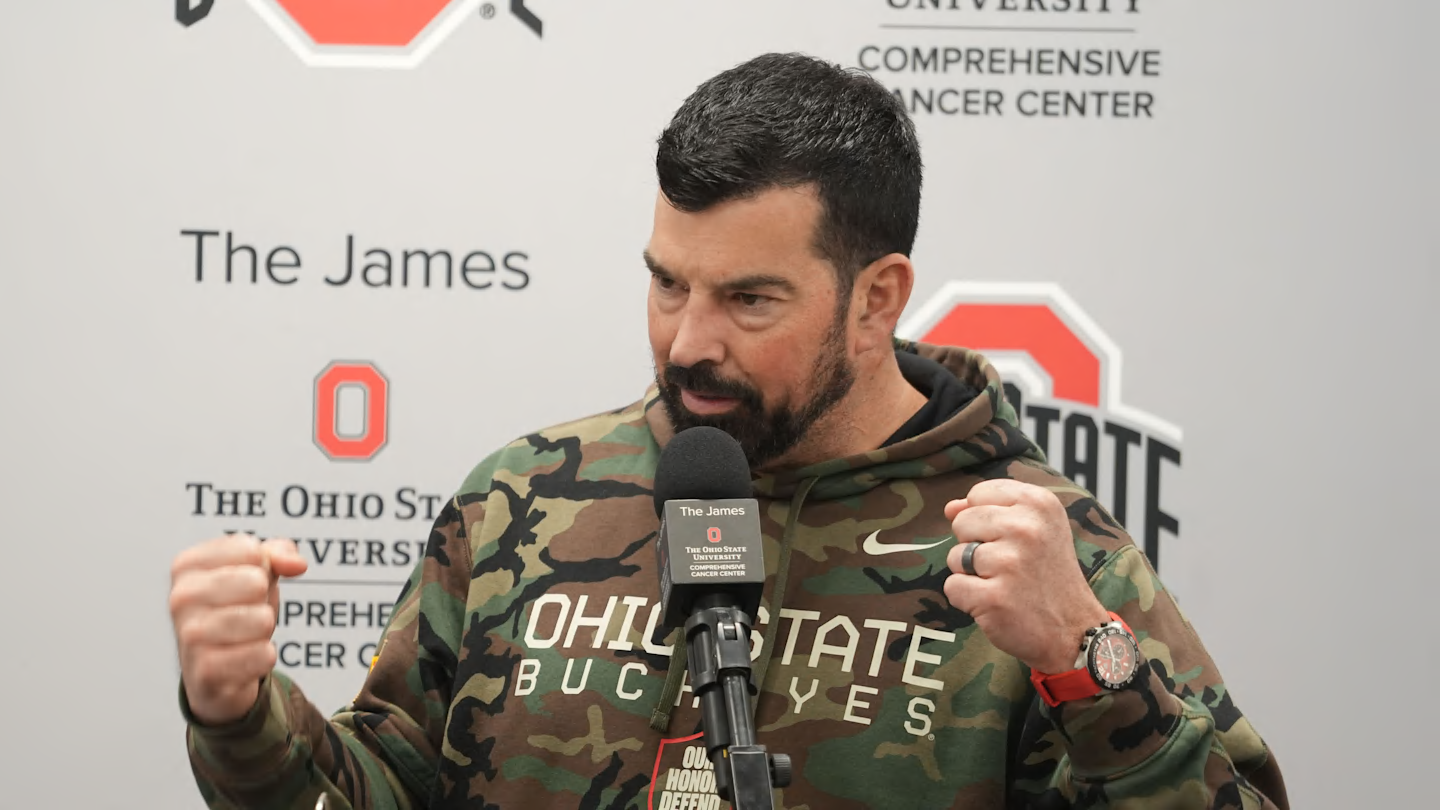NIL
Huskies Fall in Regular Season finale
STORRS, Conn. – The UConn softball team fell to the St. John’s Red Storm in extra innings, 6-5 on Sunday afternoon at Burrill Family Field. UConn finishes the regular season with a 32-17 record, locking up the No. 2 seed in the BIG EAST Tournament with a 18-6 conference record. Graduate student […]
STORRS, Conn. – The UConn softball team fell to the St. John’s Red Storm in extra innings, 6-5 on Sunday afternoon at Burrill Family Field. UConn finishes the regular season with a 32-17 record, locking up the No. 2 seed in the BIG EAST Tournament with a 18-6 conference record.
Graduate student Payton Kinney made her 23rd start of the season in the circle for the Huskies in the regular season finale. Kinney went 6.0 innings giving up five runs on just three hits, adding a pair of strikeouts.
The game was a pitcher’s duel through the first three innings as St. John’s recorded the game’s first hit in the third inning.
St. John’s opened the scoring in the fourth inning with a grand slam, giving the Red Storm a 4-0 lead.
UConn began to chip away at the Johnnies lead, scoring a run in the bottom half of the fourth inning off the bat of freshman infielder Cat Petteys, as the rookie hit a solo home run to center field, her 12th homer of the season, making it 4-1.
Redshirt-sophomore Sydnee Koosh came on in relief for Kinney in the fifth inning, making her 25thappearance of the season. Koosh went 2.0 innings giving up one run on three hits with a strikeout.
St. John’s added a run in the top of the fifth inning, extending the deficit to four runs once again, 5-1.
UConn slashed into the deficit with one swing in the bottom of the sixth inning as senior infielder Rosie Garcia delivered a three-run home run, her fifth of the season, making it a one run ballgame, 5-4.
Kinney re-entered the circle in the middle of the seventh inning, relieving Koosh. Kinney went on to close out the game on the mound for the Huskies.
Junior catcher Grace Jenkins once again came up clutch for the Huskies, delivering a game-tying home run in the bottom of the seventh inning. Down to their final out, Jenkins hit a no doubter to left center for her team leading 19th homer of the season, sending the game to extra innings.
St. John’s once again re-captured the lead in the top of the eighth inning, 6-5.
UConn continued to fight, as they loaded the bases in the bottom of the eighth inning but could not find a key hit to send the game to a ninth inning.
News and Notes
- Cat Petteys homered in back to back games for the third time this season.
- Grace Jenkins extended her on base streak to 27 straight games.
- Rosie Garcia recorded her 16th multi-hit and 10th multi-RBI games this season.
- Haley Coupal recorded her 8th multi-hit game this season.
- All five of UConn’s runs came from homers.
- UConn turned two double plays, giving the Huskies 16 this season.
Up Next
UConn heads to the BIG EAST Tournament next week, hosted by Villanova as the No. 2 seed. The Huskies will play on Thursday, May 8 against the winner of the Villanova vs. Providence opening round game. First pitch is scheduled for 3:00pm.
Follow our social media pages for updates.
Twitter – UConnSoftball
Instagram – UConnSoftball
Facebook – UConn Softball
NIL
Without Action, NIL Risks Entrenching Inequities (opinion)
When the National Collegiate Athletic Association authorized students to monetize their name, image and likeness (NIL) rights in 2021, the decision was framed as a transformative disruption of amateurism, a chance to democratize financial opportunities across all college athletes, regardless of gender, sport or institutional affiliation. Advocates envisioned a marketplace where visibility, entrepreneurship and merit […]

When the National Collegiate Athletic Association authorized students to monetize their name, image and likeness (NIL) rights in 2021, the decision was framed as a transformative disruption of amateurism, a chance to democratize financial opportunities across all college athletes, regardless of gender, sport or institutional affiliation. Advocates envisioned a marketplace where visibility, entrepreneurship and merit could eclipse systemic bias.
Four years later, the results are starkly disproportionate. Despite NIL’s promise of inclusion, early outcomes reveal a new iteration of entrenched hierarchies. Football and men’s basketball athletes capture the overwhelming majority of NIL earnings, while women athletes and athletes on nonrevenue teams fight for a marginal share of the market. Without deliberate structural reform, NIL threatens to entrench long-standing inequities under a modern guise.
NIL’s Uneven Impact
Industry data shows that nearly 80 percent of NIL dollars flow to male athletes, particularly in football and men’s basketball. Female athletes, even those with notable athletic success or strong social media presences, remain vastly underrepresented in the NIL economy.
Structural factors reinforce this disparity. Booster-backed NIL collectives, which pool financial resources to support athletes, heavily favor men’s sports. Corporate sponsorships and media deals mirror historical inequities, channeling investment into male-dominated programs while relegating women’s teams to the periphery. Visibility begets value, and in a marketplace where women’s sports still struggle for equitable media exposure, the playing field remains far from level.
NIL was not designed to correct these underlying market forces, but it now magnifies them. Without intervention, it risks solidifying a two-tiered economy in college athletics.
Structural Challenges on the Horizon
Experts in college athletics governance warn that emerging legal frameworks will further complicate the NIL landscape. The House v. NCAA settlement is slated for implementation on July 1. It will allow universities to directly share revenue with student athletes, capped at $20.5 million annually per institution.
Under this model, institutions must balance new forms of direct compensation with Title IX obligations and financial sustainability. Yet as legal scholars note, mechanisms for ensuring gender equity in relation to institutional NIL payments remain vague. Enforcement is expected to focus on egregious violations, not on proactively monitoring systemic disparities.
It is worth noting that these reforms are built around the infrastructure of the Power Four conferences, former Power Five members and high-revenue sports programs, leaving smaller institutions to bear the consequences. A key critique raised during policy discussions is that the NCAA is funding legal defenses and settlements (such as House v. NCAA) largely stemming from Power Five football, despite receiving no revenue from the College Football Playoff, which is independently operated by the conferences. The NCAA’s primary income source is March Madness, yet it shoulders the regulatory and legal burdens tied to football governance.
The settlement also introduces roster limits as a cost-control and Title IX compliance strategy. While reducing football roster sizes may create financial savings, roster limits risk unintended consequences: shrinking athletic opportunities and destabilizing programs that have historically expanded access for women. Institutions must tread carefully to avoid worsening inequities under the banner of financial reform. Fewer athletes also mean fewer enrolled students paying tuition and contributing to campus life, subtler but significant consequences for institutional sustainability.
Additionally, with federal guidance on NIL payments and Title IX in flux since the change in presidential administrations in January, it remains unclear how Title IX should apply to direct athlete compensation and NIL structures. This regulatory uncertainty is unfolding alongside a broader retrenchment in higher education equity efforts. Diversity, equity and inclusion initiatives have faced mounting political and legal challenges, with many institutions scaling back public-facing commitments to equity under state pressure or due to administrative caution.
For instance, states like Florida, Oklahoma and Texas have enacted laws and policies that dismantle DEI offices and restrict related programming at public universities. These states collectively host more than a dozen Power Four institutions, including prominent programs in the SEC and Big 12 conferences. The elimination of DEI infrastructure in these states not only limits institutional capacity to address equity in NIL implementation but also exacerbates compliance challenges under Title IX. In this climate, even well-intentioned NIL reforms risk deprioritizing gender equity, not only at institutions facing state legislative pressures, but across the broader higher education landscape, where structural limitations and regulatory ambiguity increasingly constrain equity-focused work.
Without a coherent federal framework, institutions are left to interpret compliance on their own, often inconsistently and without the tools to embed gender equity into NIL design. As regulatory momentum builds, there is a real risk that top-down reforms will entrench existing hierarchies rather than dismantle them. Legal pressure is mounting as well: Cases against the NCAA are increasingly addressing more nuanced areas of NIL, including media rights, retroactive compensation and the classification of athletes as employees. These developments signal that without clear, equity-centered policy, institutions may soon find themselves not only out of compliance, but in court.
Building Equity by Design
Higher education must recognize that NIL is not just a financial or athletic issue; it is a fundamental equity issue. Institutions cannot afford to replicate old hierarchies under a new system.
Concrete steps forward include:
- Building equitable promotional strategies: Ensure comparable visibility across men’s and women’s sports by investing in joint marketing campaigns, content creation resources and equitable social media promotion, not just traditional media coverage.
- Implementing comprehensive NIL education programs: Offer workshops that directly address gender-based disparities in financial literacy, contract negotiation, branding strategies and legal rights, for both student athletes and coaching staffs.
- Strengthening institutional NIL infrastructure: Equip athletic departments with trained NIL administrators, general managers and compliance officers to support equitable deal facilitation and roster management across all sports, not just revenue teams.
- Structuring donor engagement more inclusively: Actively encourage booster support for women’s and Olympic sports by creating collective fundraising goals, incentive matches and branding opportunities that spotlight underrepresented teams.
- Embedding Title IX compliance at every stage: Require that institutional NIL deals undergo equity review for gender representation before approval and align NIL policies with broader Title IX audits to ensure systemic, not incidental, compliance.
- Expanding shared governance around NIL oversight: Engage faculty senates, equity officers and trustees in the design and review of NIL policies to ensure they align with broader institutional commitments to Title IX and educational access.
NIL offers unprecedented opportunities for student-athletes, but opportunity alone does not guarantee equity. Without intentional correction, the marketplace will reflect and reinforce historical biases. Colleges and universities must commit not merely to participating in the NIL era, but to shaping it in a way that honors the values of inclusion, fairness and educational purpose.
NIL
Softball America Top 25 Rankings: Final 2025
The 2025 college softball season has concluded after the Texas Longhorns claimed their first national title. Texas, which was the No. 1 in our poll eight of 14 times this season, returns to that top spot after the 2025 Women’s College World Series. All eight Women’s College World Series teams, along with Clemson and Florida […]

The 2025 college softball season has concluded after the Texas Longhorns claimed their first national title. Texas, which was the No. 1 in our poll eight of 14 times this season, returns to that top spot after the 2025 Women’s College World Series. All eight Women’s College World Series teams, along with Clemson and Florida State, round out the Top 10.
Teagan Kavan’s historic WCWS performance leads Texas to first national championship
Three teams that were unranked ahead of conference tournament week. Liberty and Georgia return to the rankings after their Super Regional appearances. North Florida makes its first-ever appearance in the Softball America poll after reaching the Columbia Regional Final.
Read more: Top 100 College Softball Players of the 2025 season
| Ranking | Team | Record | Last Week Ranking |
| 1 | Texas | 56-12 | 6 |
| 2 | Texas Tech | 54-14 | 9 |
| 3 | Oklahoma | 52-9 | 4 |
| 4 | Tennessee | 47-17 | 5 |
| 5 | UCLA | 55-13 | 11 |
| 6 | Oregon | 54-10 | 8 |
| 7 | Ole Miss | 42-21 | 21 |
| 8 | Florida | 48-17 | 7 |
| 9 | Clemson | 48-14 | 10 |
| 10 | Florida State | 49-12 | 3 |
| 11 | Arkansas | 44-14 | 1 |
| 12 | Alabama | 40-23 | 15 |
| 13 | Nebraska | 43-15 | 19 |
| 14 | South Carolina | 44-17 | 12 |
| 15 | Liberty | 50-15 | NR |
| 16 | Georgia | 35-23 | NR |
| 17 | Texas A&M | 48-11 | 2 |
| 18 | Arizona | 48-13 | 14 |
| 19 | Stanford | 42-13 | 16 |
| 20 | Virginia Tech | 43-13 | 17 |
| 21 | LSU | 42-16 | 13 |
| 22 | Mississippi State | 39-19 | 17 |
| 23 | Ohio State | 45-14-1 | 18 |
| 24 | Duke | 41-18 | 22 |
| 25 | North Florida | 47-15 | NR |
Also received votes: Southeastern Louisiana
For transfer portal news, stay up to date with the Softball America transfer wire and the Dugout, our discussion board for members.
NIL
What is the end date for the crazy NIL deals?
Gyandle said… (original post) You don’t think legislation is going to stop teams from finding a way to use rich boosters to slide players money? They did it before NIL. They did… show more That is kind of a ridiculous line of thinking. Sure, there will be some payments outside the system, but for perspective, […]



Gyandle said… (original post) You don’t think legislation is going to stop teams from finding a way to use rich boosters to slide players money? They did it before NIL. They did…
That is kind of a ridiculous line of thinking. Sure, there will be some payments outside the system, but for perspective, during the bagman era, major deals were less than 10% of what they became when it was legalized. Tiny in comparison. It’ll go back that way. The ultra rich just can’t launder that amount of money under the table, nor do most of the ultra rich have the stomach for that type of thing. So it will be peanuts compared to what it was…we know, because we saw what it was when it was under the table before. Tiny in comparison. Less than revenue share that is coming by a long shot.
NIL
Notre Dame Baseball
We’re all at home watching the NCAA Baseball Tournament — including the Notre Dame Fighting Irish baseball prgram. They would like to get back to making a regional appearance next season for the first time in 4 years, and it will likely be the transfer portal that will help decided that fate. This past weekend, […]



We’re all at home watching the NCAA Baseball Tournament — including the Notre Dame Fighting Irish baseball prgram. They would like to get back to making a regional appearance next season for the first time in 4 years, and it will likely be the transfer portal that will help decided that fate.
This past weekend, Notre Dame added two new pitchers from the transfer portal.
Garrett Stratton, a right-handed pitcher from the Rice Owls, is coming to South Bend next year.
The next day it was Ty Uber from the Stanford Cardinal, another right handed pitcher, that also announced his decision to transfer to Notre Dame.
The Irish will still need more help for the 2026 season, but adding quality pitching to the staff is a great start.
NIL
How the House settlement affects the Ohio State football team's recruiting
The new House settlement will change how football programs recruit moving forward. Now that there is an NIL budget for entire athletic departments, the Ohio State football program will have to figure out how to properly allocate their own slice of the NIL budget. What we don’t know is how much of that NIL budget […]



The new House settlement will change how football programs recruit moving forward. Now that there is an NIL budget for entire athletic departments, the Ohio State football program will have to figure out how to properly allocate their own slice of the NIL budget.
What we don’t know is how much of that NIL budget will belong to the Buckeyes. While the football program brings in the most money, other sports are going to be fighting for some of that NIL budget. For this season, it will be around $20.5 million for the entire athletic department.
How much the Ohio State Buckeyes use on individual recruits is going to be tougher now that there is a set limit they can spend. Ryan Day has already made it clear that NIL is not going to be the most important thing they use to recruit prospects, but it is certainly a move they make.
How the House settlement will affect the Ohio State football program recruiting from now on
For the 2026 recruiting class, the Buckeyes have already been operating under the assumption that some kind of budget was coming. They shouldn’t be affected for this upcoming class, at least not yet. It’s unclear if they know how much of that NIL budget they’ll have.
Ross Bjork is in charge of figuring that out. Considering the fact that the athletic department was operating at a $38 million deficit, we’ll see how much they want to spend on football moving forward. They also only have 13 commitments for the class so far, so they can adjust on the fly.
The Ohio State football program is going to have to make tough decisions with some high-profile recruits. It will be an interesting dance that the Buckeyes have to do moving forward, as the NIL budget will continue to increase every year.
NIL
Kansas State infielder Seth Dardar commits to LSU out of transfer portal
LSU is adding a big bat out of the NCAA transfer portal. Kansas State infielder Seth Dardar has committed to the Tigers, he announced on his Twitter account on Sunday evening. Dardar spent just one season with the Wildcats. He hit .326 with 18 doubles, 13 home runs and 45 RBI. He accounted for 39 […]

LSU is adding a big bat out of the NCAA transfer portal. Kansas State infielder Seth Dardar has committed to the Tigers, he announced on his Twitter account on Sunday evening.
Dardar spent just one season with the Wildcats. He hit .326 with 18 doubles, 13 home runs and 45 RBI. He accounted for 39 runs during the season.
“I have decided to come home and live out my dream to play at Louisiana State University!” Dardar wrote. “Thank you to everyone who was a part of my journey that has led me to this position, and thank you Coach Johnson, Coach Jordan, and the rest of the LSU staff for giving me the opportunity to live out this dream. Geaux Tigers!!!”
Before arriving at Kansas State in 2025, Seth Dardar spent three seasons at Columbia. He did not play during the 2024 season due to injury.
During that time, he produced a career slash line of .289/.383/.537. In his sophomore season, he slashed .299/.392/.575 with 11 doubles, one triple and eight home runs while driving in 32 runs. He also scored 32 runs with four stolen bases.
Though he spent only one year at Kansas State, Dardar had nothing but good things to say about the Wildcats on his way out. He penned part of his departure note about Kansas State.
“First and foremost I want to thank Kansas State University and the entire coaching staff for affording me the opportunity to make memories and friendships this year that will last a lifetime,” Seth Dardar wrote. “To the Manhattan community and K-State fan base, thank you for taking me in and making me feel at home. The overwhelming support and love I felt from everyone at Kansas State is something I will cherish forever.”
As things stand, Seth Dardar is set to join one of college baseball’s elite programs. LSU is currently looking to advance to the College World Series again in 2025, needing just one more win over West Virginia in the next two games in the Baton Rouge Super Regional.
LSU won the national title in 2023. That’s certainly something Dardar will be helping the Tigers pursue in 2026.
-

 College Sports3 weeks ago
College Sports3 weeks agoPortal Update – Basketball and Gymnastics Take Hits
-

 Professional Sports3 weeks ago
Professional Sports3 weeks agoJon Jones answers UFC retirement speculation as fans accuse champion of 'holding the belt …
-

 Youtube3 weeks ago
Youtube3 weeks agoXavier Legette taught Marty Smith his signature celly
-

 Motorsports3 weeks ago
Motorsports3 weeks agoWhy IHOP Rode With Dale Earnhardt Jr. In Amazon NASCAR Debut
-

 NIL2 weeks ago
NIL2 weeks ago2025 NCAA Softball Tournament Bracket: Women’s College World Series bracket, schedule set
-

 College Sports3 weeks ago
College Sports3 weeks agoNCDC Commitment Profiles: Cyclones’ Martins Moving On to Saint Anselm College • USPHL
-

 High School Sports3 weeks ago
High School Sports3 weeks agoToday in the MHSAA
-

 Health3 days ago
Health3 days agoOregon track star wages legal battle against trans athlete policy after medal ceremony protest
-

 College Sports1 week ago
College Sports1 week agoIU basketball recruiting
-

 Youtube2 weeks ago
Youtube2 weeks agoAnt greets A-Rod & Barry Bonds before Game 3


























 STEPHEN A. CALLS OUT LEBRON for Giannis and NBA eras comments
STEPHEN A. CALLS OUT LEBRON for Giannis and NBA eras comments  | First Take
| First Take







